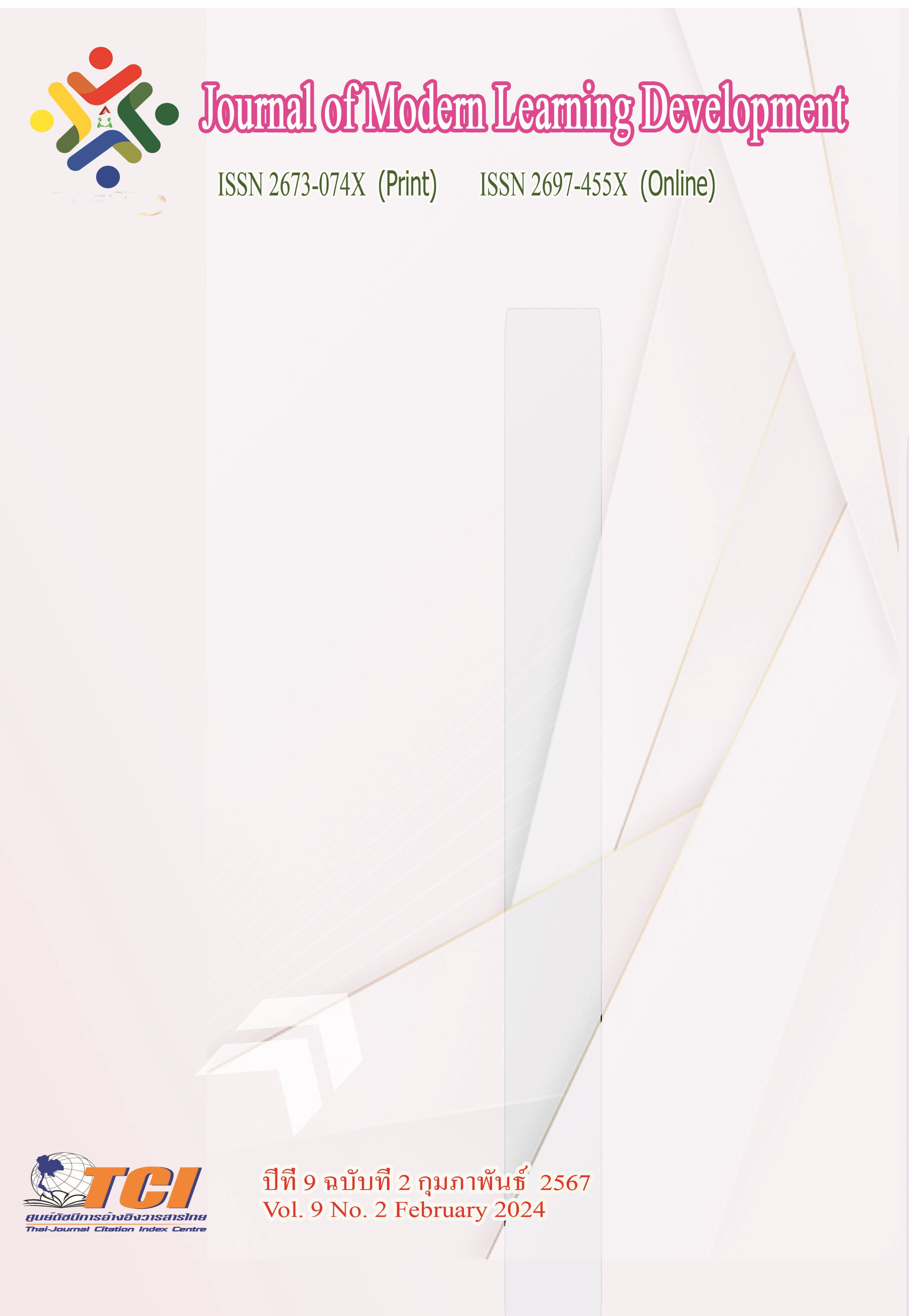Teaching Chinese students playing Thai music on erhu in Liyin art school, Hunan province, China
Main Article Content
Abstract
This paper presents the finding of a study that intended to seek the teaching result validity evidence of an instument to measure the abilities of Chinese erhu students playing Thai music in Liyin art school. There are eight volunteers participating in 10 sessions divided into four stages, each stage containing a formative test. And there will be an additional review and performance exam for summative evaluation.This research used qualitative and quantitative research mixed methods. Research designed based Requirements for the Erhu Exam of the Social Art Level of the Chinese Musicians Association; academic research was used to study Thai sawduang music with item-objective congruence (IOC) reliability scale. In IOC, the construced guidebook and lesson plan of “Teaching Chinese Students Playing Thai Music on Erhu” was verified its effectiveness by 4 key informants including two Thai music masters and 2 Chinese erhu experts to criticize and bring the results to revision for one round in total. The results of this study are: Eight students had stable increase in four formative tests and one summative test. By using reliability measurement for the guidebook and lesson plan. The minimum score passing the benchmark achieve 0.75 totally, evidenced the reliability of this study.
Article Details
References
Bai, X. (2020). Erhu de Yanzou Jinneng yu Jiaoxue Chanshi. The Performance Skills and Teaching Explanation of Erhu. Changchun. Jilin Publishing Group Co., Ltd.
China Musicians' Association Music Grading Committee & China Musicians' Association Erhu Society (Eds.). (2020). Quanguo Erhu Yanshou Kaoji Zuopin Ji (Di Wutao). [National Erhu Performance Grading Syllabus (Fifth Set)]. Beijing. People's Music Publishing House.
David, M. (1976). The Traditional Music of Thailand. University of California Press.
Earl, L. (2003). Assessment as Learning: Using Classroom Assessment to Maximise Student Learning. Thousand Oaks, CA: Corwin Press.
Ellis, A. J. (1880). History of Musical Pitch. Journal of the Society of Arts, 21 (545), 293-337.
Miao, T. (1998). Encyclopedia of music. Beijing. People's Music Publishing House.
Moskal, B. M., & Jonsson, A. (2019). Scoring rubric development: Validity and reliability. Practical Assessment, Research, and Evaluation, 7 (1).
O'Bannon, B. (2008). What is a Lesson Plan? Innovative Technology Center. The University of Tennessee. Archived from the original on July 29, 2011.
Rodriguez, M. C. (1998). Item-objective congruence as a useful index of item discrimination. Journal of Educational Measurement, 35 (3), 309-320.
Roonguang, P. (1980). Thailand. In S. Sadie (Ed.), The New Grove Dictionary of Music and Musicians. (18, 354-357). Macmillan Publishers Limited.
Roonguang, P. (2001). Thai classical music and its movement from oral to written transmission, 1930-1942. historical context, method, and legacy of the Thai Music Manuscript Project, (9), 26-40.
Roonguang, P. (2010). Principle of Thai Music. Bangkokthonburi University.
Terry E. M. (1992). The Theory and Practice of Thai Musical Notations. Ethnomusicology, 36 (2). 197-221.


